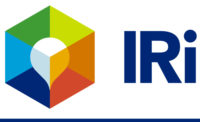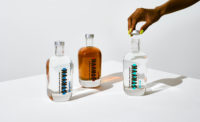The 95% Iceberg: How the Non-conscious Mind Drives Purchase Decisions and Determines Brand Loyalty
Understanding the importance of context is the critical foundation for selling to the non-conscious

Neuroscience teaches that our five senses take in approximately 11,000,000 bits of information every second. But our conscious mind can only process 40 bits a second. Combine that fact with another, equally startling truth: our non-conscious minds make 95% of our daily decisions.
It is self-evident that while consumers think they are making actively conscious choices across all aspects of their daily lives, in fact it is their non-conscious that drives 95% of their behaviors. The implications of that obviously have immense importance if you seek to persuade your customers to form a loyal connection with your brand, and to make that critical purchase decision in the store aisle or online.
So, if you are a manufacturer or marketer of prepared foods, the key question is: how do you successfully make that deep dive into the non-conscious realm which controls us? How do you become one of those precious 40 bits that make it into the conscious mind?
Nature knew it was necessary to ensure that our conscious minds cannot deliberately, at will access our non-conscious minds. Imagine being aware of every sensory input—all 11 million of them!—that flood into your brain every second. You would be paralyzed into inaction.
But you can learn the ‘secrets for selling to the non-conscious mind’, as I describe them in my book “The Buying Brain” (https://amzn.to/2Jw4g7M). Here I will offer a condensed set of guidelines and best practices to equip you to reach and influence that master decision maker that operates just below the surface: the “iceberg between your ears”.
- Context Is King
The brain is constantly working to understand and relate to its surroundings, as our senses continuously process them. It strives endlessly and intensely to put that world into context. Have I been here before? Was it nice, or frightening? Do I know this person? Did I like that flavor? Does that package appeal, or repel?
Understanding the importance of context in everything that you do, whether it is new product formulation, packaging design, marketing messaging, planagrams, promotions and more is the critical foundation for selling to the non-conscious.
- MNEA Means Business
The brain functions with a firm hierarchy. In order of importance, that hierarchy is:
Motion
Novelty
Error
Ambiguity
Understanding and applying that hierarchy in advertising, online content, store displays, packaging, and more will conform you well with your consumer’s non-conscious mind. Here’s why:
Motion: Our brains are hard-wired to notice motion first and foremost. Our early survival as a species depended on it. If you don’t spot the leopard lurking in the brush, you may be dinner.
Novelty: our brains look for and love what is new.
Error: our brains are captured when error is detected.
Ambiguity: our brains are enamored when presented with the not-entirely-clear-and-evident.
- Emotion Rules
Especially when it comes to new products, often the choice is made to appeal primarily to the rational brain. It seems to stand to reason: if I give you enough compelling facts, you are more likely to buy.
Right? Wrong. The non-conscious thrives on emotion. Rational appeals have their place, of course—there’s that 5% conscious mind that might accept and process them and even retain them. But if you want to reach and persuade the ‘iceberg’ dwelling inside your customers’ craniums--the non-conscious mind that rules over the other 95% of daily decisions--your best bet is to appeal through emotion.
- Feature Faces
Humans are hard-wired to be drawn to faces. It is one of the most essential and universal traits. I advise retail clients to include mirrors in their stores, because shoppers will be entranced without consciously knowing why. And every tiny squirt of dopamine secreted by the brain in that setting makes the customer feel just a little bit…better.
Include faces in your packaging, advertising, website, promotional and POS materials. The consumer will notice. She has to, and she wants to.
- Clear Sells
When it comes to products that we eat, or put on our bodies, our brains are drawn to packaging that reveals what’s inside. The brain is ever curious—and it wants to know that the content of that product is “OK” in several ways. Seeing is believing, in that sense.
Next time you’re in the supermarket, look at the pasta aisle. There are packages with clear ‘windows’ that let you see the carbs inside—and then there are the others, hiding what’s within. Again because your conscious mind cannot access your non-conscious, you’ll be unaware of the subtle preference at work. But it’s there nonetheless.
- Packaging Paralysis
While you’re in the store, visit two more locations: the section where bacon is sold, and the section where toothpastes are on display. You won’t know it, but in some cases, you might just ‘feel it’.
The ‘it’ is a neurological phenomenon called “repetition blindness”.
Notice how in the bacon section almost every package has what I called out above: a clear window where you can actually see the product inside. Great, you may think; neuroscience at work!
Now stroll over to the toothpaste aisle. Notice that practically every package is shaped virtually identically, much like the bacon packages. And, similar to the bacon packages, many of which tend to extensive use of red or yellow colors, almost every single toothpaste box features the same set of colors: red, white, blue, and often a sampling of silver or gold.
OK. So what?
When so many packages in large displays like these have the same or near-same visual components, a fascinating thing happens: your non-conscious goes into semi-overload mode. Known in neuroscience as “repetition blindness”.
Remember the role of context? The brain seeking to find points of identity and familiarity? When most everything in sight looks the same, a certain non-conscious, imperceptible ‘fatigue’ sets in. When you make the brain work even harder than usual to comprehend its surroundings, much less make a purchase decision, it will default to the thing it thinks it knows best. “I bought the Acme Bacon/the WhiteBright toothpaste last time. Guess I’ll get it again.”
Differentiate. Or become part of the big blur that triggers repetition blindness.
This is just a small sampling of all that neuroscience offers in the way of guidelines and best practices that can help propel a prepared food from the store shelf into the shopping cart.
I’ll add a message about the importance of metaphors in your business, drawn from my work in applying artificial intelligence to drive innovations in marketing and new product development.
Metaphors are what I call ‘the language of the non-conscious mind’. They are a form of shorthand for the brain, which prizes inputs that facilitate ease of processing for those 100 billion neurons in our heads. Metaphors do that. I explain more about this powerful tool, and how highly advanced artificial intelligence and machine learning systems enable them to be applied effectively for marketing purposes, in my book “AI For Marketing And Product Innovation” (https://amzn.to/3475Lmk).
For example: if I were marketing plant-based alternative meat products—so-called ‘fake meat’—I would discover the key metaphors that could attract the non-conscious mind’s interest, spark an emotional connection, and enhance memory retention of my product and my messaging. Metaphors can deliver a powerful competitive advantage in the marketplace; smart marketers are using AI-powered systems today to extract them and apply them to gain that advantage.
Looking for a reprint of this article?
From high-res PDFs to custom plaques, order your copy today!





